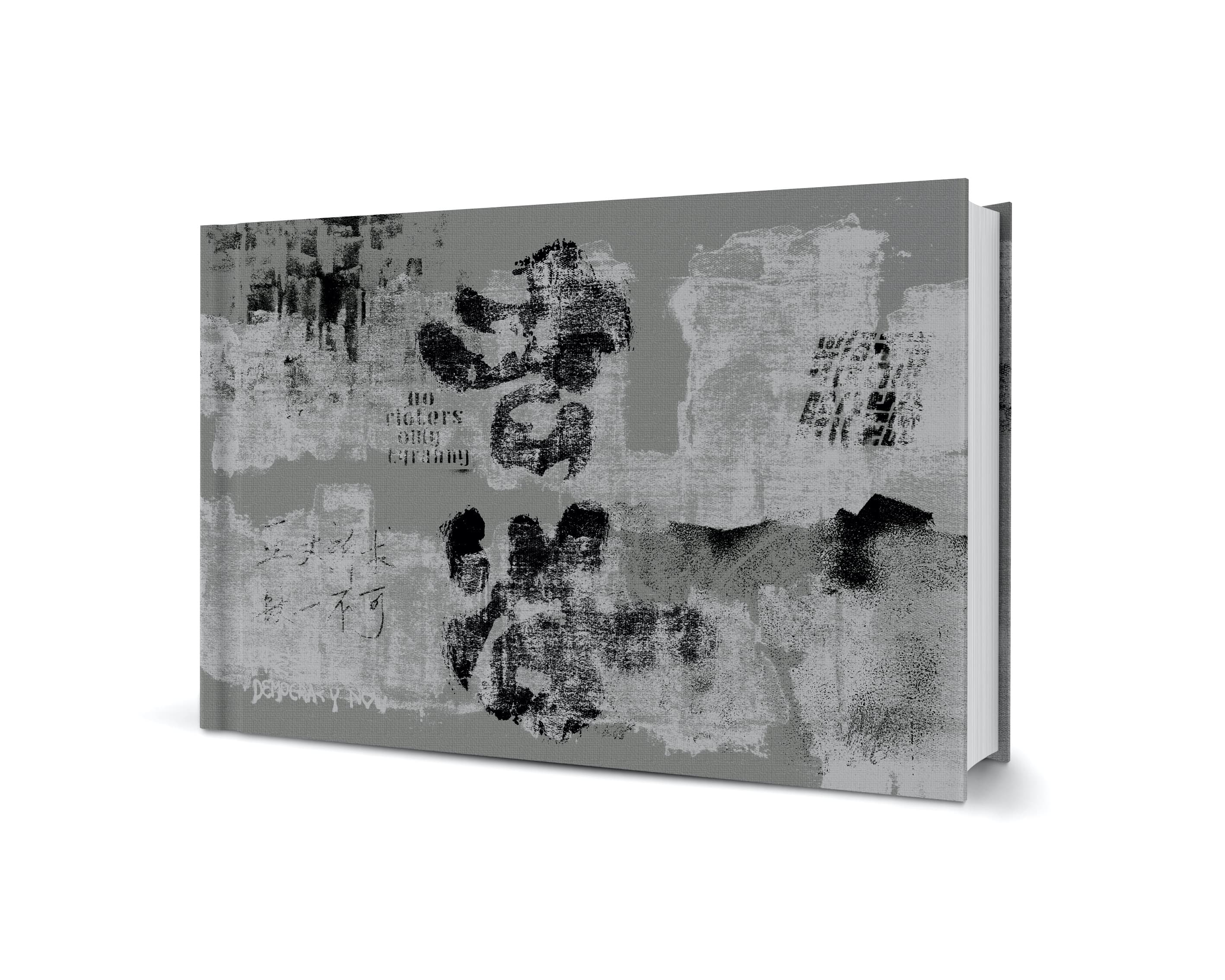潮湧: 香港反修例運動影像紀錄
| 作者 | 端傳媒團隊; 吳泳詩/ 謝梓楓/ 文字 |
|---|---|
| 出版社 | 環友文化事業有限公司 |
| 商品描述 | 潮湧: 香港反修例運動影像紀錄:《潮湧》是端傳媒首本中英雙語紀實精裝攝影集。由堅守前線的攝影師們精選123張照片,從百萬人遊行到理大圍城,近距離紀錄香港由夏至冬的潮 |

| 作者 | 端傳媒團隊; 吳泳詩/ 謝梓楓/ 文字 |
|---|---|
| 出版社 | 環友文化事業有限公司 |
| 商品描述 | 潮湧: 香港反修例運動影像紀錄:《潮湧》是端傳媒首本中英雙語紀實精裝攝影集。由堅守前線的攝影師們精選123張照片,從百萬人遊行到理大圍城,近距離紀錄香港由夏至冬的潮 |
內容簡介 《潮湧》是端傳媒首本中英雙語紀實精裝攝影集。由堅守前線的攝影師們精選123張照片,從百萬人遊行到理大圍城,近距離紀錄香港由夏至冬的潮浪翻湧。以紙本的力量創造獨特的時空,讓讀者重溫、感受和思考這場運動。同書收錄雙語反修例運動大事紀,仔細梳理各個重要時刻。 「這一冊影像詮釋,把激變中的香港,定格在歷史潮湧的浪尖,騰出思考與沉澱的空間。」 ——馬傑偉(香港中文大學新聞及傳播學院退休教授) 「在政治事務上似乎沉睡了一個多世紀的香港市民,過去幾年以來...... 快速打開了對公共事務和政治參與的高度投入與強大意志。」 ——郭力昕(台灣政治大學傳播學院教授
作者介紹 端傳媒團隊端傳媒,立足香港,面向全球華語讀者,以原創深度報導和數據新聞為特色,深入剖析在地及國際事務。在時代潮湧中,提供新的討論視野和表達方式。2015上線以來,獲得超過45個新聞或攝影大獎。設立付費制兩年多,累積付費會員超過40,000名,成為華文圈最具影響力的網路媒體之一。
產品目錄 目錄 【推薦序】馬傑偉 教授 【推薦序】郭力昕 教授 【前言】林振東 端傳媒攝影主任 01. 潮 Masses 02. 煙 Smoke 03. 暴 Force 04. 唱 Sing 05. 困 Deadlock 06. 火 Burning 2019香港反修例運動——大事紀 A Timeline of the 2019 Anti-Extradition Bill Protests in Hong Kong 詳細資料 ISBN:9789887993322 規格:精裝 256頁 29W x 20.6H cm 初版 出版地:香港 作者:端傳媒 出版社:端傳媒科技(香港)有限公司 出版日期:2020 02 語言:繁體中文及英文
| 書名 / | 潮湧: 香港反修例運動影像紀錄 |
|---|---|
| 作者 / | 端傳媒團隊; 吳泳詩 謝梓楓 文字 |
| 簡介 / | 潮湧: 香港反修例運動影像紀錄:《潮湧》是端傳媒首本中英雙語紀實精裝攝影集。由堅守前線的攝影師們精選123張照片,從百萬人遊行到理大圍城,近距離紀錄香港由夏至冬的潮 |
| 出版社 / | 環友文化事業有限公司 |
| ISBN13 / | 9789887993322 |
| ISBN10 / | 9887993328 |
| EAN / | 9789887993322 |
| 誠品26碼 / | 2681852667009 |
| 頁數 / | 256 |
| 注音版 / | 否 |
| 裝訂 / | H:精裝 |
| 語言 / | 94:中 英對照 |
| 尺寸 / | 20.6X29CM |
| 級別 / | N:無 |
內文 : 煙
黑旗舉起,白色大字寫著:警告 催淚煙。槍聲一響,一縷白煙穿過空氣。催淚彈著地燃燒,煙霧隨即騰起。防暴警察的槍口火花閃現,槍聲不斷,空氣漸漸彌漫著刺鼻、令人窒息的白色煙霧。
在6月12日,反修例運動最早的一場警民衝突中,警察已經選擇了發射逾240枚催淚彈,作為人群管制的方式。過去半年,香港局勢動盪,催淚彈成為警察面對示威時最常使用的武器。
有統計指,反修例運動的首6個月中,在香港各區,警方對示威者發射超過1萬6千枚催淚彈。新聞報導估計,香港約88%的人口曾經曝露於催淚彈釋出的化學物之中。
在衝突最嚴重的時候,警方曾在一個地點發射逾1千5百枚催淚彈。關於催淚彈對公眾健康及環境的影響,社會憂慮重重。警方多次重申,催淚彈是非致命武器,使用目的是驅散群眾。但隨著警方使用催淚彈的密度增加,一些懷疑濫用催淚彈的情況被傳媒記錄,公眾對警方的評價每況愈下,香港警察的公信力顯得盪然無存。在香港民意研究所11月底進行的民調中,4成市民給予警方0分,反映「非常不滿意」。
催淚煙籠罩著香港的街道,使香港的繁華鬧市、石屎森林變成白霧彌漫的詭譎戰場。煙霧中,示威者穿戴的粉紅色防毒面罩顯得如此醒目,成為了反修例運動的標誌性畫面。
Smoke
A black flag is raised: warning, tear smoke. A shot rings and a curving line of smoke pierces the air. As the canister lands, smoke pours out in swirls. Riot police in groups would break out and fire shots - one, two, three, until the air is thick with the nauseating acid stench of gas.
On June 12, one of the earliest days in the half-year protests that rocked Hong Kong, the police had chosen to fire more than 240 rounds of teargas as their crowd control measure. Teargas remains their top-used tool in handling the protests.
In the first 6 months of the ongoing anti-extradition bill protests, the police deployed nearly 16,000 teargas canisters at protesters in various districts across Hong Kong. Some news reports estimated that around 88 percent of the population have been exposed to the chemicals released from the gas.
On some of the worst days, the police reported that they have used over 1,500 cans in just one sight. Public health concerns and the potential toxication of the environment become a collective distress. The police reiterated through the months that teargas is a non-lethal weapon, used with the intention of dispersing crowds. But as the use increased and incidents of suspected misuse were recorded, the public’s opinion of the police deteriorated, until all trust in the police vanished like smoke. In a November poll conducted by the Hong Kong Public Opinion Research Institute, 40% of citizens gave the Hong Kong Police a 0 mark, meaning deep dissatisfaction over the police.
Smoke masks the streets, turning Hong Kong’s shopping districts and skyscraper-flanked roads into eerie battlefields. Teargas smoke has become a symbol of this movement, just like the pink-filtered gas masks protesters don to protect themselves from it.
最佳賣點 : 凝視時代潮浪 真誠紀實之作
★☆馬傑偉教授、郭力昕教授誠意推薦
如水般的人潮,煙霧瀰漫的街頭,炙熱如火的抗爭前線,這一幕幕交織構成2019下半年裡香港人的共同回憶。攝影師身處前線,用鏡頭捕捉到這些珍貴畫面,亦紀錄下未會被大眾所看見的細節。